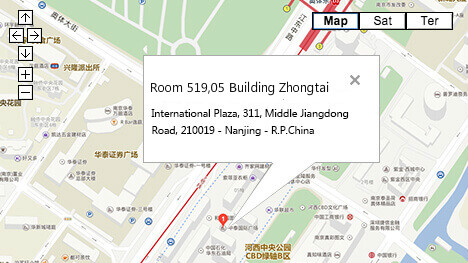Pins recall alert published by the United States Consumer Product Safety Commission ( CPSC) and…
Quality Control of Made-In-China Products in Different Industries
BY RENAUD ANJORAN
Over the past few months, on the SynControl blog, I have written articles about what differs from one product category to the next.
I’ll list them below and summarize what is really specific about each industry vertical when it comes to quality inspections.
Mechanical products
There are typically many measurements to check. You should ask yourself:
- What is really CTQ (critical to quality), and what doesn’t need to be inspected?
- Is there typically variation within a given batch, or is it OK to check on just 1 piece, on each process?
- Do we need to record the exact values (for use in statistical analyses), or is a OK / Not OK result fine? Go/no-go gauges are great time savers.
Some statistical indices and graphs are commonly used, as shown in the article I linked to. However, it doesn’t mean much without a proper MSA (measurement system analysis) to confirm that measurement findings are somewhat relevant.
And finally, a visual check of the pieces, as well as an inspection of the labeling & packing elements, should not be overlooked. It’s not all about measurements!
Garments
I spent years working solely or predominantly in the garment industry, from 2005 to about 2010. I don’t dislike that industry at all. But I have to say, I haven’t met a more backward group of people. They tend to resist any new ways of thinking, any new methods and technologies. That’s why many inspectors still use pen and paper, and some can’t even take clear digital photos…
I found it is quite important for garment inspectors to be trained in following a careful procedure. Here are two examples where they should be very careful at the beginning of a QC job, rather than rushing to get the job done quickly:
- As they pull samples out of cartons, they look at them on a hanger, they place them flat on a table… Is there any issue, anything shocking?
- When playing with the first piece: what can go wrong here? What has the designer written based on the PP samples?
A never-ending frustration is the time to record measurements, often on Excel sheets pulled out of a ‘tech pack’…
Electrical home appliances
Buyers of home appliances generally buy a range of products — few of them are specialized in, say, toasters or microwave ovens.
Many details have to be checked on each product, and it is important to be quite organized. It makes sense to develop category-specific checklists, plus a few checkpoints to account for the differences from one model to the next within that product category.
The problem is often as follows. Checking one model in full takes time. And reporting on that inspection (including photos, recorded data…) takes nearly as much time! This is where specialized reporting software can help a lot.
If the suppliers are relatively large (and there is a number of large home appliance manufacturers in China), they can be requested to work through corrective actions. (Unfortunately, most small Chinese factories can’t be expected to do this on their own.) A good follow up of corrective actions is really helpful.
Home & decoration products
In many cases, inspectors look into the company’s catalogue to get the specs! That’s how marketing-driven many of these companies are.
There are often more than 10 SKUs to check — sometimes more than 50 SKUs. 20 pieces of that kind of willow basket, 60 pcs of that kind, and so on. That means two things:
- There is a time constraint — the overall value is not high, so inspectors often have to do the job in 1 day maximum. They can’t go in much depth.
- All these different products are not always made in the same facility. They might come from 10 different homes in the neighboring village! Tracking what comes from where can be impossible. Forget about quality improvement plans — if there are many issues, just switch to another supplier…
Furniture items
In furniture, even more than with garments, the buyer often wants to use his own QC team. There is little trust in the staff sent by third-party inspection companies.
It is not practical to send a file cabinet or a chair by courier. The approval of samples is often done at the factory. Batches are relatively small, and products take up a lot of space — sometimes too much for a tiny factory!
When it comes to quality control, it is important to make a distinction:
- Modern furniture is rather straightforward.
- Antique furniture often incorporates imperfections on purpose, so a good understanding of what is expected and what is “nice” is a must.
Loading supervisions are more frequent too, as the way the products are packed and stacked up has a strong impact on their quality on arrival.
Promo & gift products
This is quite a heterogeneous category! It is actually comprised of three sub-categories:
- Give-away items on customer demand — they have to ‘look good’ only, and it’s all about speed and cost control.
- A stable set of products that make up a catalog – it becomes easier to ensure quality when buying from the same set of suppliers.
- Accessories and packaging for high-end brands — quality is a must, inspections are to be done very carefully (detailed checklist, 1 lot per SKU, full reporting…).
Article Source: https://qualityinspection.org/qc-industries/


This Post Has 0 Comments